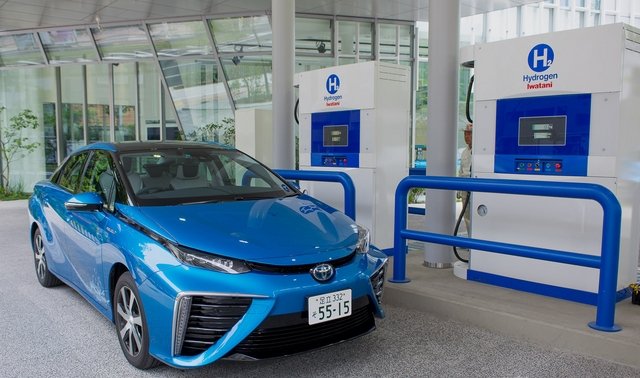With Prime Minister Shinzo Abe continuing to trumpet fuel cells as the advanced powertrain of the future, the government says the number of fuel-cell vehicle on its roads will multiply by 100 within the next four years, according to the Japan Times.
Specifically, Japan, which is home to about 400 fuel-cell vehicles today, hopes to have 40,000 by 2020 and a whopping 800,000 by 2030. More importantly, Japan has 80 stations either in operation or slated to be deployed soon, and hopes to double that number by the end of the decade. For perspective's sake, the US has about two-dozen publicly accessible hydrogen fuel cell stations today, according to US Department of Energy. The newer ones are can dispense 100 kilogram a day, which can fuel 20-25 cars a day.
Japanese automakersHonda and Toyota appear to be trying to do their parts in the H2 plan. Earlier this month, Honda started leasing its Clarity fuel-cell vehicle in Japan and is planning to bring them to California later in the year. The vehicle, which is priced at about $68,000 in Japan, is said to be able to travel about 466 miles on a full hydrogen tank, per the more lenient Japanese driving cycle (roughly 300 miles on the US scale). Honda will start production at a rate of 200 vehicles a year.
With skin in the game, though, Honda indicated late last year that it was frustrated with what it said was the slow pace of fuel-cell station deployment in Japan, according to Bloomberg News. Honda was collaborating with hydrogen supply company Iwatani Corp. on what they called a "Smart Hydrogen Station," though that concept was in its testing phase as of last December.
The Mirai also started sales in Japan and debuted in limited numbers in California last year. Last fall, Toyota set a rather lofty goal of selling 30,000 fuel-cell vehicles a year by 2020 as part of its Toyota Environmental Challenge 2050.
Nouvelles connexes



